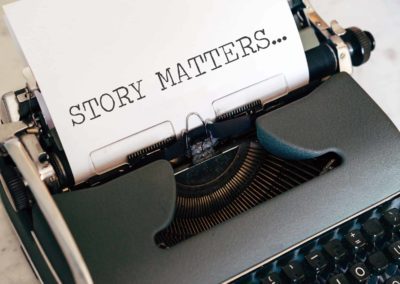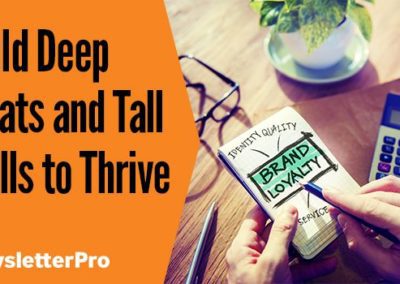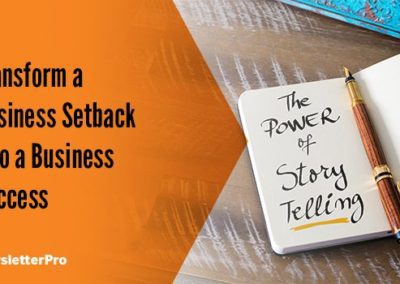Have you ever considered why Homer’s stories made it from ancient Greece to your local bookstore? Far from their Mediterranean home, long separated from the toga-clad gatherings that the storyteller commanded, Homer’s tales survive. Much like its protagonist, “The Odyssey” stood up to tempests and time to find its way to you. All because Homer could spin one heck of a yarn.
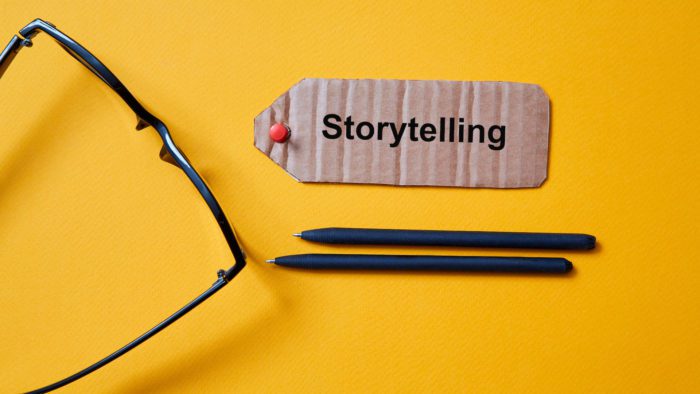
If “The Odyssey” is any indication, the art of story selling is the most powerful method of persuasion known to man. In their bestselling book, “Story Selling: Hollywood Secrets Revealed,” Emmy winner Nick Nanton and Emmy-nominated J.W. Dicks explain the science behind why stories are essential to the human mind and create a how-to guide for a marketing campaign that’s built around this powerful method of persuasion.
A How-To Guide to Storytelling and Story Selling
Nanton and Dicks are masters at taking complex concepts and distilling them into easy-to-understand terms. Their book reveals the principles Hollywood has built billion-dollar franchises on. They make it an entertaining read by using well-known examples. The making of “Rocky” and the story of Nike’s famous slogan illustrate their points. Through these, they demonstrate how any entrepreneur or business owner can put stories to work to create their own blockbuster success in the form of a marketing campaign.
In business, it’s hard to know who to trust. When you get to the root of people’s desires, you find that what they ultimately want to know is your story — who you are and where you come from. As a business owner and entrepreneur, if you haven’t defined your story, you haven’t truly defined your brand. You’ve given others the opportunity to create a story for you.
Science Confirms the Rumor: People Love Stories
As Instagram’s move to add the feature indicates, people love stories. Nanton and Dicks start from the idea that everyone likes to be on the receiving end of a story, and they point to revealing brain scans to prove it. Researchers at Claremont Graduate University found that when we hear a story, our brains produce “the love hormone,” oxytocin. Crazy, isn’t it? But maybe not all that surprising.
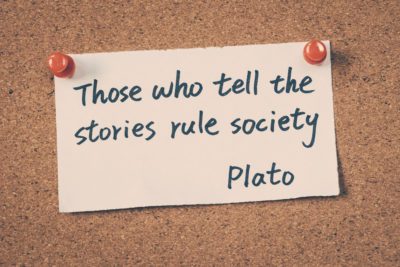
Think about the last time you almost cried (okay, maybe a few slipped out) by a commercial. You know the one — sad music comes on as you watch a young child in a hospital bed, surrounded by family, then watch as they recover and eventually play outside with their siblings. How did a simple advertisement cause such a visceral reaction? Our brains are activated because a story is something we relate to, it’s an experience that humanizes and connects us to others. It makes remote experiences suddenly feel close.
Your story is the most persuasive tool you have, and it should also be what defines your brand. How you choose to tell it as also largely up to you. Nanton and Dicks have identified some pointers in their book.
4 Key Elements of a Story
To craft a story that hits home, Nanton and Dicks have identified four key elements that need to be present:
- Simplicity (How easy is your story to grasp and repeat?)
- Authenticity (Does it feel authentic, or does it sound like a sales pitch?)
- Visibility (Put it in front of your target audience.)
- Relevancy (Make it something people are interested in.)
Nanton and Dicks encourage creative license to craft the message you want to share with consumers. However, the authors warn against abusing the power of a story or sacrificing one of the four elements. Use caution when deciding how much to embellish your story; otherwise, you risk violating the authenticity element. Creating a larger-than-life version of reality will ultimately fail. “When a big lie is told, it’s only a matter of time before it does catch up with you,” the authors caution. In the age of the internet, when information is available at the drop of a hat, it won’t be long before someone calls your bluff.
The Hero’s Journey
Not that long ago, in a galaxy relatively close by, a scholar by the name of Joseph Campbell identified a storytelling pattern. The likes of George Lucas and Steven Spielberg went on to use it with massive success. In his research, Campbell found that all stories share a common thread: they depict the Hero’s Journey, or, as Nanton and Dicks refer to it, “The Ultimate Story.” From Odysseus to Luke Skywalker to Harry Potter, it’s the journey (both the struggles and victories) of these heroes that we watch and listen for.

For a nonfiction example, Nanton and Dicks refer to Steve Jobs to illustrate the arc of The Ultimate Story. From meeting Steve Wozniak and dropping out of college to start Apple, to being booted from his own company, all the way back “home” again to the success he found after returning to Apple, it’s this type of journey that Nanton and Dicks encourage you to find in your own story. They make creating “The Ultimate Story” achievable by applying traditional writing techniques to business to help you distill the message you want to convey.
Of their approach, Dan Kennedy, author of “No B.S. Trust-Based Marketing,” says, “Nanton and Dicks are masters of the art, science, and process of identifying, crafting, and presenting stories for strategic purposes. This book is rich in examples, authoritative research, and direct ‘case history’ experience. It gives you practical blueprints, nearly templates. Most importantly, it proves its case beyond a shadow of a doubt.”
If Kennedy’s testament is any indication, “Story Selling: Hollywood Secrets Revealed” not only gives you a new perspective on marketing, but it shows you how you can immediately implement Nanton and Dicks’ storytelling philosophy into your marketing strategy.
So, what’s your story?
Want to put storytelling to work for you? Ask us about how print newsletters can do just that. Click Here to schedule a consultation.



